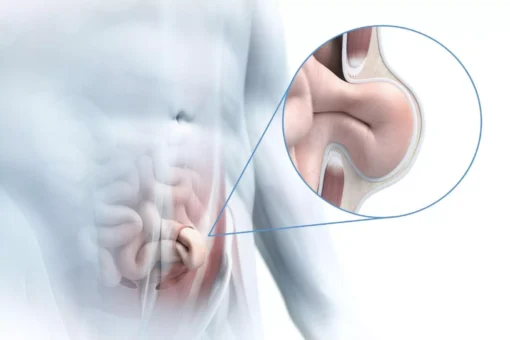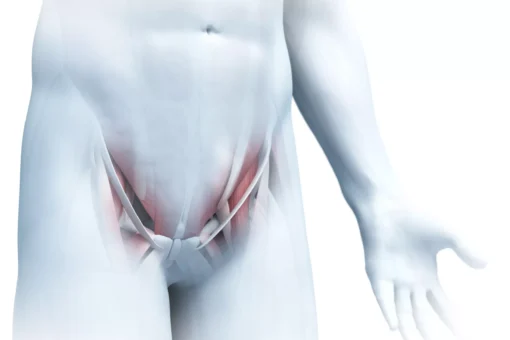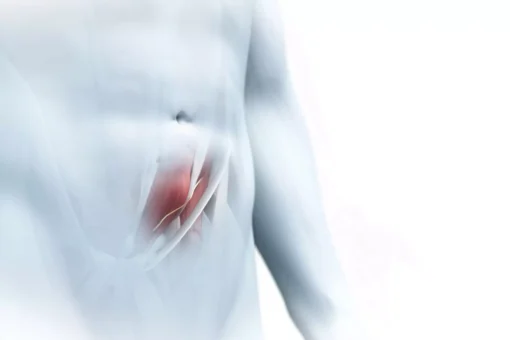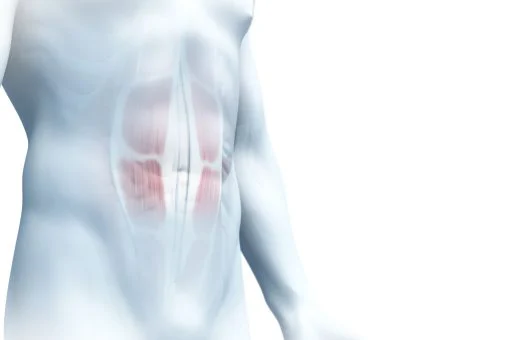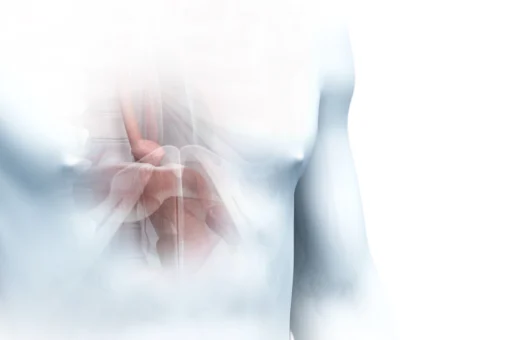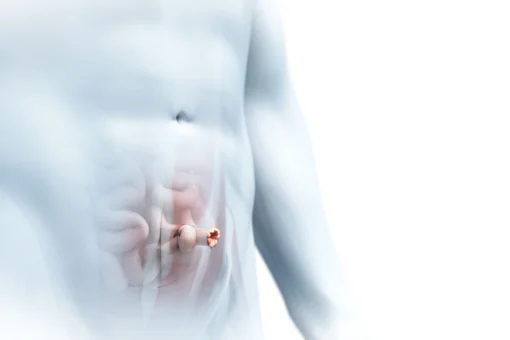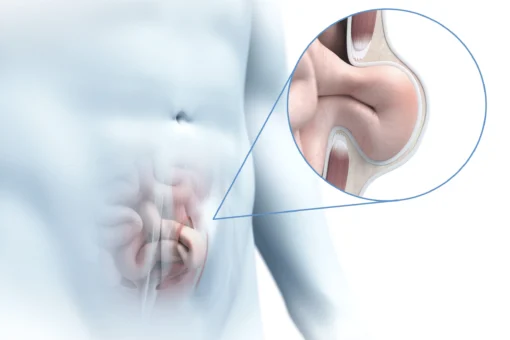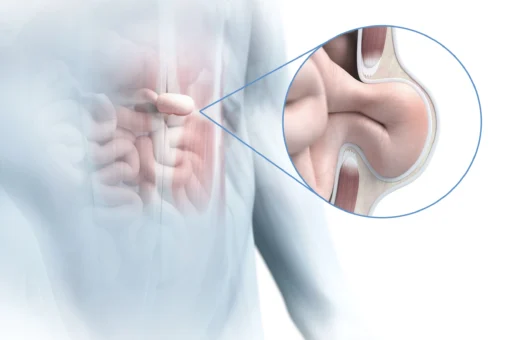The inguinal hernia
Content
An inguinal hernia is the most common type of hernia.
Do you feel a pulling pain in the groin area? Is there perhaps even an unusual bulge in your groin area? Then it could be that you are suffering from a hernia.
Inguinal hernias are divided into direct inguinal hernias, which are protruding through the abdominal wall towards the outside of the body, and indirect inguinal hernias, which protrude through the inguinal canal into the abdominal cavity.
The abdominal wall is weaker in places where larger vessels pass through the abdominal wall. One of these weak spots is the inguinal canal, a 4 to 5 cm long tube that passes through the abdominal wall in the groin area. Nervous, blood and lymphatic channels run through the inguinal canal. In men, the inguinal canal also contains the vas deferens and the spermatic cord. In women, it contains the uterine ligament, which is one of the ligaments that fixes the uterus in the pelvis. Since the inguinal canal penetrates the fascia and muscle layer and the abdominal wall is less stable here, most hernias occur in the groin area. Men are affected more often because the inguinal canal is wider than in women.
It often happens that the patient only feels pain on one side of the groin and the family doctor diagnoses him with a unilateral hernia. However, it is often a double-sided hernia. Currently, the patient only feels pain on one side. If only this side were treated, the pressure would shift within the body and after only a few weeks after the operation, the second side would also rupture and cause pain. Such a case, as well as an unnecessary second operation, can be prevented by an examination by a specialist.
Risk factors that favour inguinal hernias are obesity, pregnancy, connective tissue weakness and general pressure increases in the abdominal cavity, for example due to chronic constipation and pressing during bowel movements or a strong, chronic cough.
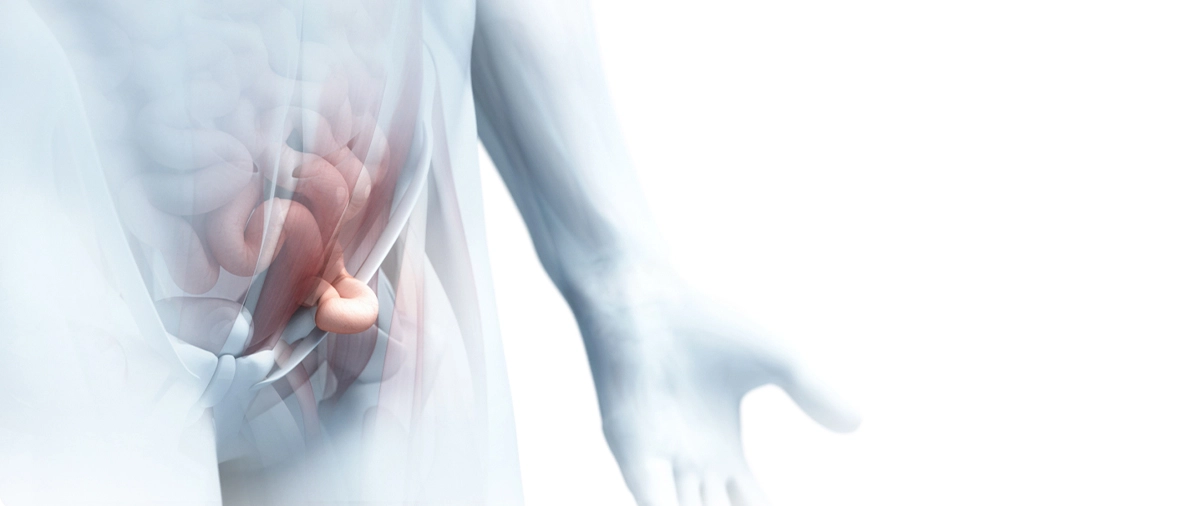
Inguinal hernias at a glance
Direct inguinal hernia
- always acquired
- turned out towards the outside of the body (medial)
- The hernia sac runs through the abdominal wall above the inguinal ligament.
Indirect inguinal hernia
- Acquired or congenital
- turned out into the abdominal cavity (lateral)
- The hernia sac runs through the inguinal canal above the inguinal ligament.
Symptoms of a hernia
The following symptoms can occur in connection with an inguinal hernia:
- A protrusion on the groin that is usually only visible when standing
- May manifest as a pulling pain in the groin area, which increases when
- coughing or tightening the abdominal wall
- Usually makes little to no complaints
- Testicular pain caused by irritation of a nerve in the inguinal canal
- Painful muscles in the upper part of the inner thigh
- Hernia sac can be felt and visible, but does not have to be. If there is pronounced fatty tissue, a hernia is sometimes difficult to recognise.
- When coughing or pushing, the hernia usually protrudes even more.
As soon as you have complaints, you should go see a doctor.
CAUTION: If you have a fever, vomiting and nausea, it could be an incarcerated hernia. Call us immediately or go to the nearest hospital emergency ward!
Inguinal hernias in women
Because the inguinal canal is narrower in women, inguinal hernias occur far less frequently. Only just 10% of all inguinal hernias affect women. Even if the hernia does not cause any discomfort, women are usually advised to have an operation because they are more likely to have complications. Often, what women think is an inguinal hernia suddenly turns out to be a femoral hernia during the operation. This also causes pain in the groin area, but does not show any noticeable bulge.
Inguinal hernias in children
The protrusion of the hernia is sometimes only visible in children when they are screaming or pushing. The hernia causes little discomfort. Occasionally, the child feels a pulling pain in the groin. If the hernia sac moves downwards, the scrotum may swell in boys and the labia in girls. Surgery is usually performed a few weeks or months after diagnosis, depending on the size and urgency of the hernia. The younger the child, the higher the risks in a surgery. This is why the operation is sometimes delayed. Under general anaesthesia, the hernia is operated on in a minimally invasive way and closed with the child’s own body tissue. The child can usually go home the same day.
CAUTION: If your child is suddenly restless, cries, drinks less and vomits, it could be that the hernia is trapped. If the hernia becomes inflamed, fever may develop and the hernia sac will turn reddish. This is life-threatening for your child and requires emergency surgery. Call the emergency doctor or go to the hospital immediately.
Surgery for a hernia
If there is little discomfort and a low risk of entrapment and complications, surgery can be delayed for a few weeks to months. The risk of complications depends on the size and exact location of the hernia. During this time, it is important to avoid lifting weights and pushing during bowel movements. For a softer bowel movement, eat a diet rich in fibre and drink at least 2 to 3 litres of water per day.
Inguinal hernia operations are among the most common surgical procedures and usually proceed without complications. The pain in the groin region subsides a few days after the operation. In addition to the usual risk of anaesthesia, blood vessels and nerves in the inguinal canal may be damaged during the operation. About 10% of patients have lasting pain after the operation because the body reacts to the synthetic mesh or nerves have been injured. Permanent pain is usually more common in women than in men. Wound healing problems and inflammation are also possible.
Here you can find out more about the surgical techniques with or without mesh and the aftercare.


